Rare Late WW2 Browning Hi Power Pistol | Walk-in Wednesday
Walk in Wednesday Welcome
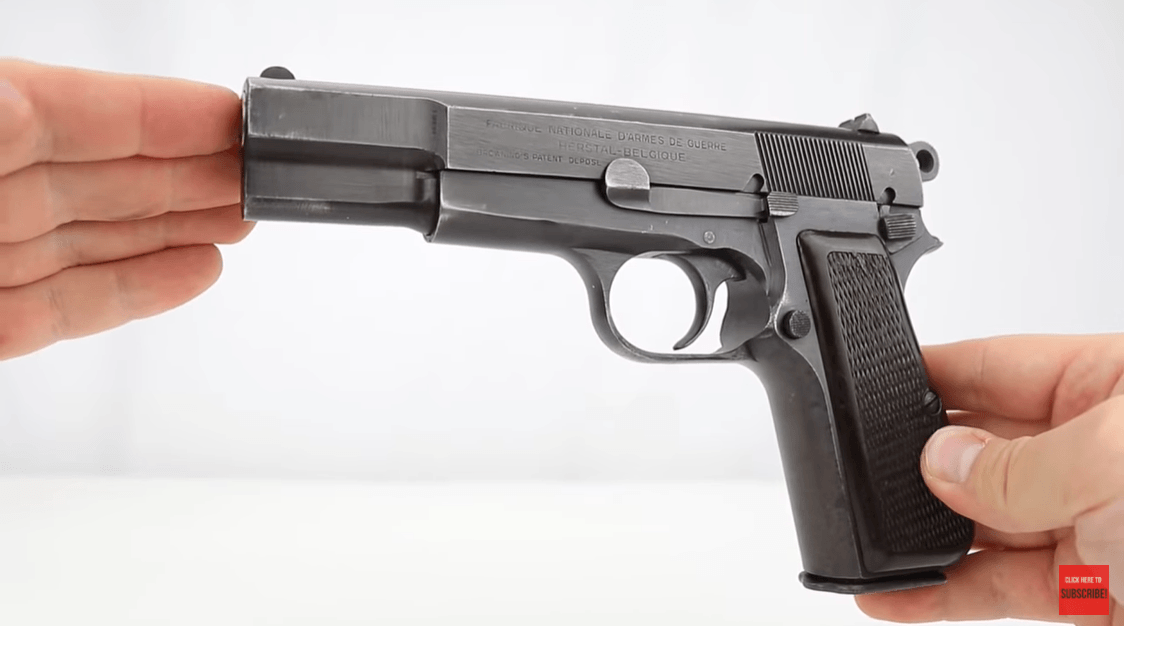
Hey guys and welcome to another walk-in Wednesday. Today I have a gun and then a series of guns that I want to show you. This, you may recognize right away as a Browning Hi-Power. If you collect these you can see pretty quickly that this is a late War Nazi Hi-Power but it's even more special than that. I want to go into why this gun is particularly special and a rare find but first let's back up a little bit and talk about the Browning Hi-Power.
Check out this book!

Now a lot of the information from this particular video comes from this book on FN Browning Hi-Powers, made in the Belgian Factory by Anthony Van der Linden. We highly recommend this book and we do make it available through our website if you'd like a copy. I'm getting a lot of my information from him, he did a great job on researching this.
The Browning Hi-Power
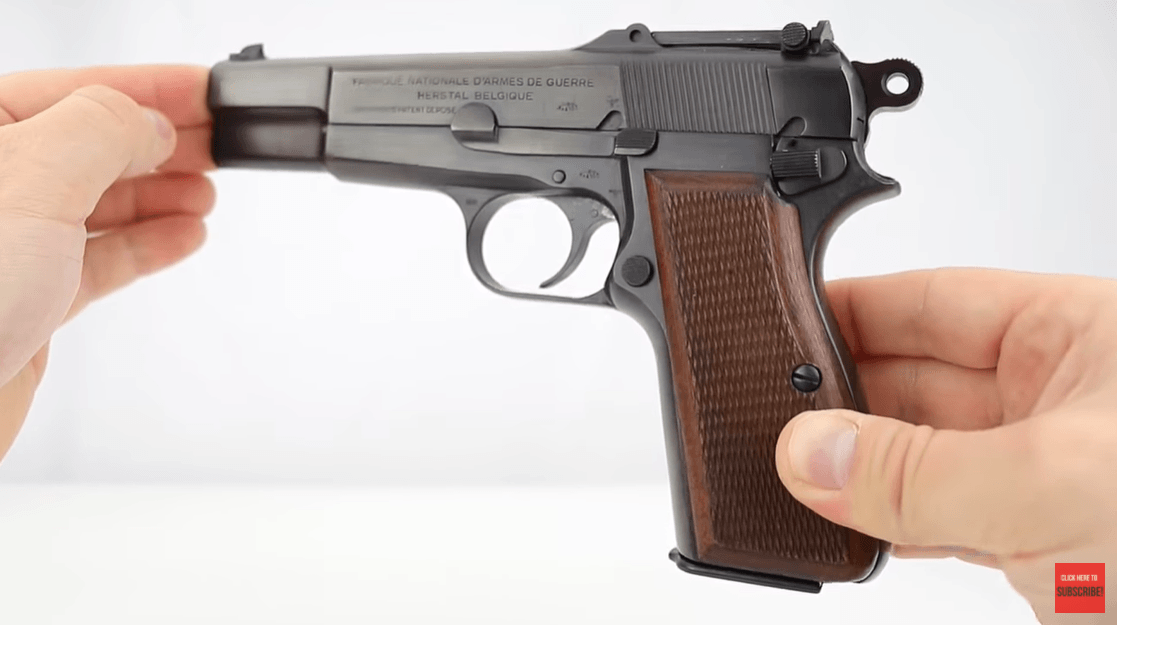
So the Browning Hi-Power, actually John Browning first made the design for the Browning Hi-Power and he died before he completed it. It was then picked up by the FN Factory in Belgium and they completed the design in the late 1920s and went into production. It was also later licensed to Inglis in Canada. Because most of you know Inglis made a Browning Hi-Power in Canada and then also Belgium was making a Browning Hi-Power in Belgium. Now what made the Browning so revolutionary in terms of its design was the mag capacity. These were made in the early 1930s for the Belgian army and you can see right away that this mag capacity was revolutionary bigger than anything else that was offered at that time. It actually holds 13 rounds, you put one in the chamber, you're talking 14 rounds; and so it was a big step ahead in terms of technology, it was a big step ahead of all the other guns being produced at that time. And in fact, this design was used post-war by armies throughout the world.
A little history on The Browning Hi-Power Pistol
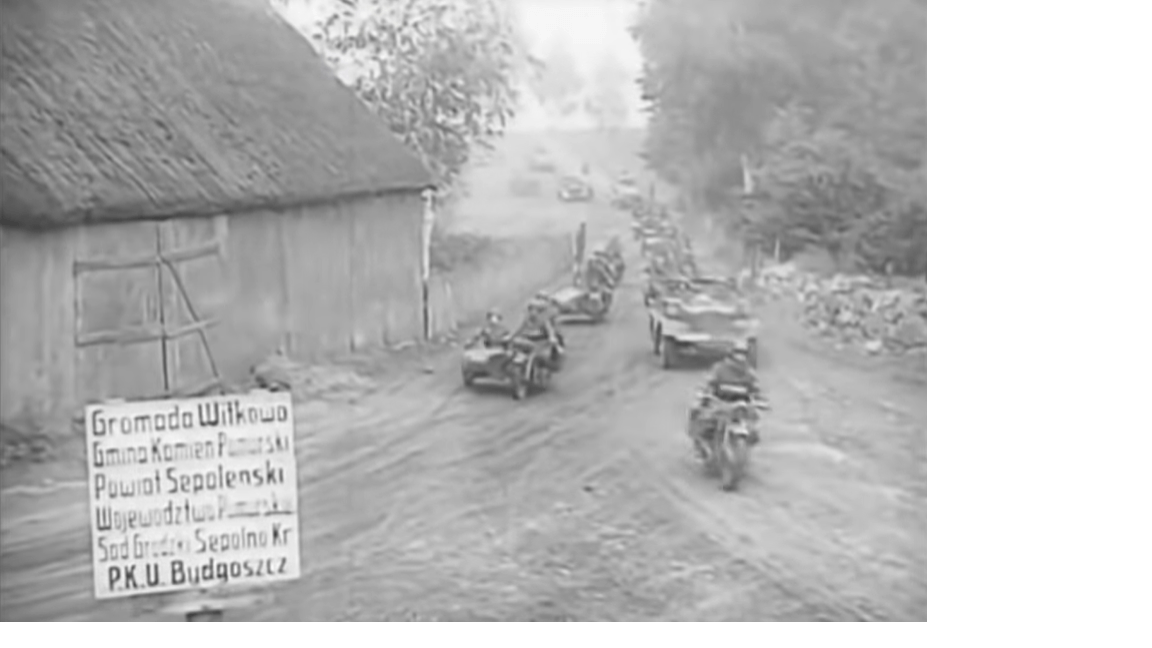
For this video I want to just focus on three variations that were used in World War II by the Germans. As you know from history but also watching our other videos, we did one on the Polish Radom. World War II, the fighting started in 1939 September when Germany invaded Poland. They then went on to invade Belgium and France in 1940 and by May of 1940 King Leopold III of Belgium, he knew that they were no match for the German army, so he surrendered the country in order to save lives but also to save many of their buildings and their history architecture and things like that. However, there are many reports of Belgian soldiers who refused to surrender and continued to stay in the field but we're basically massacred by the German mechanized divisions coming through their country. They really were no match for the German army. So after the surrender, by September, Germans had taken over the factory and had already started producing their own weapons. Now in other videos we've talked about where these weapons went because we talked about the Waffen-SS troops, a lot of their munitions came from some of the captured countries and so the Browning Hi-Power along with the Polish Radom were actually favorites among the Waffen-SS troops. So you will see pictures of Waffen-SS and as a sidearm many times they'll have captured weapons such as the Browning Hi-Power.
The First Variation
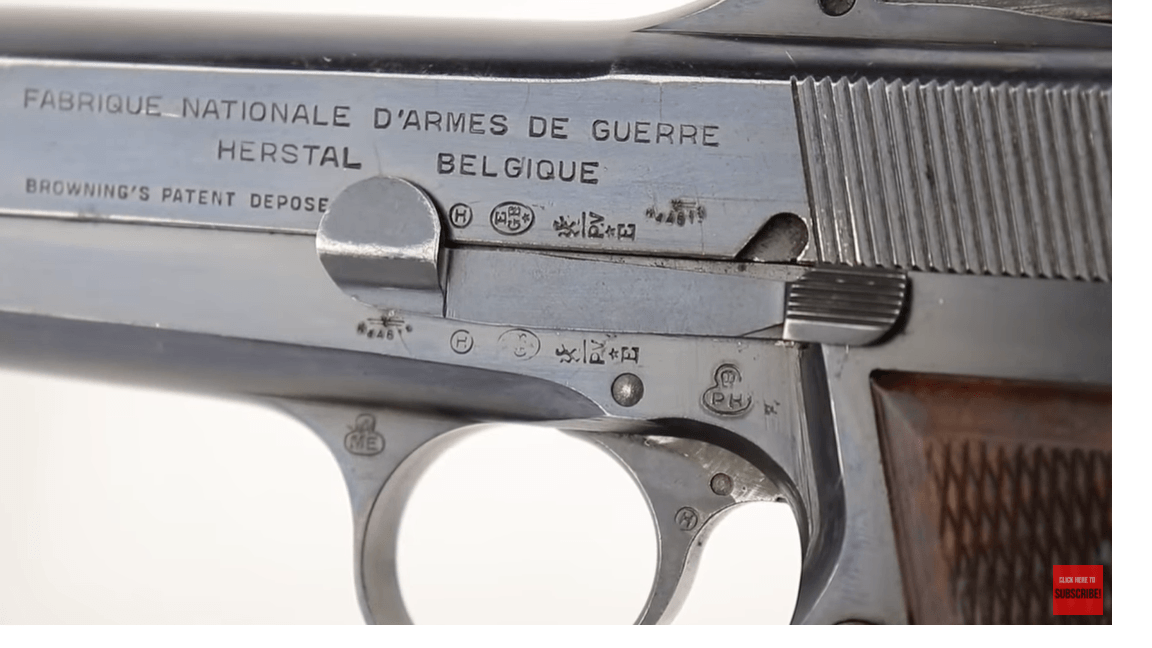
So the first variation is a slotted tangent sight. Here's an example that was put together in the factory by the Germans in 1940. This one has all the Belgian proof, so it was issued to the Belgian Army in about 1939 and must have been in the factory when the Nazis took over in 1940 because it's Belgian proofed and then 613 proofed. And therefore it is slotted and it is tangent sight, original finish, beautiful gun but the person that brought it in also had the stock. Now I've never seen a stock before but looking in Van der Linden's book this looks like a correct stock. The holster seems small for a Browning Hi-Power but when I try it out it does fit in there nicely and most importantly, this snaps on very easily. And therefore, you can like an artillery Luger, you can steady it and actually this looks like it would be a lot of fun to shoot, so I might have to try this one out. Again, first time I've ever seen the Hi-Power with the stock, so this is a very rare find. Now this one is not numbered to the gun which tells me this was a commercial stock. The military ones, again reading in the book, it says they were numbered to the gun. This must be a commercial stock that somebody just put with this gun. So I don't think it was issued with a gun but nonetheless it's very cool to have the two of these together.
First Variation but Slightly Different
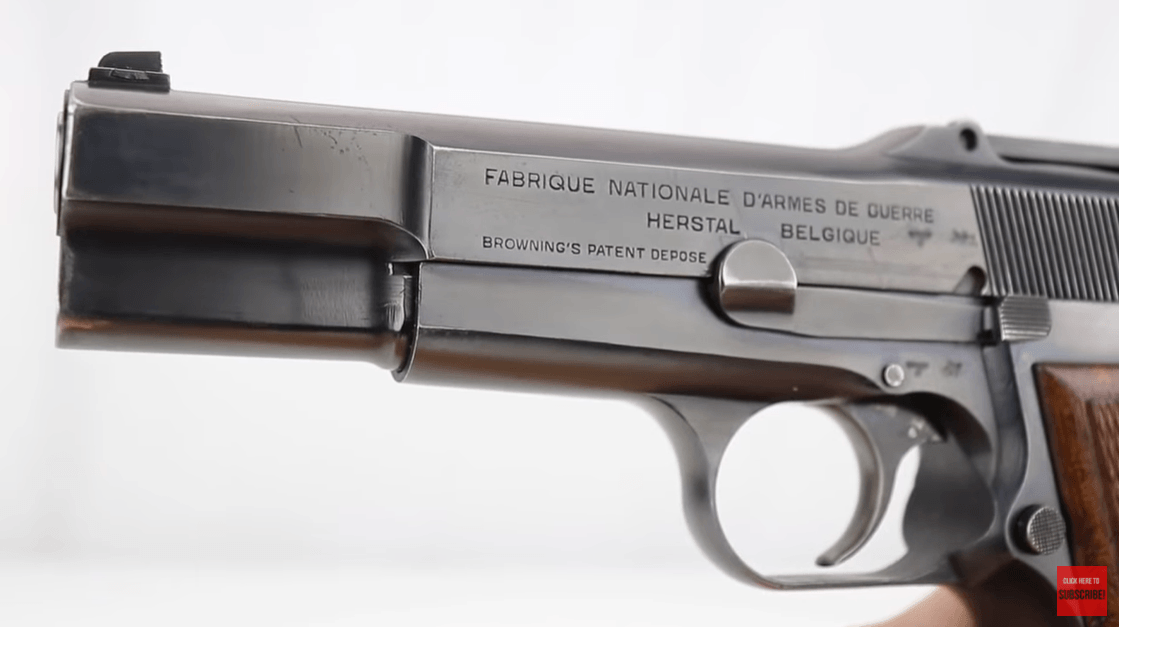
Here's another one of the first variations which would mean tangent sight and slotted. This one is a little bit different. The last one had Belgian proof, this one has the logo, you can see the FN logo which is Fabrique Nationale. I just said FN a lot and I just realized you may not know that it stands for Fabrique Nationale, you can see the logo here and you see the 613 proof. All of the proofs are kind of muddled a bit, they're hard to read but that's just because they were quickly putting the stamps on. They only made this variation one for a couple of months, September to December of 1940 or approximately September to December, a few months they made the slotted. So then the production is very very low, this is a very rare find slotted, 613, with the tangent sight. Also know some people call this the artillery sight but probably more commonly referred to as the tangent sight. So this is a variation one with just the Nazi 613 proofs. By the way, if you find one, don't be surprised if you see price tags of $5,000 - $6,000 due to the rarity of this variation.
The Second Variation
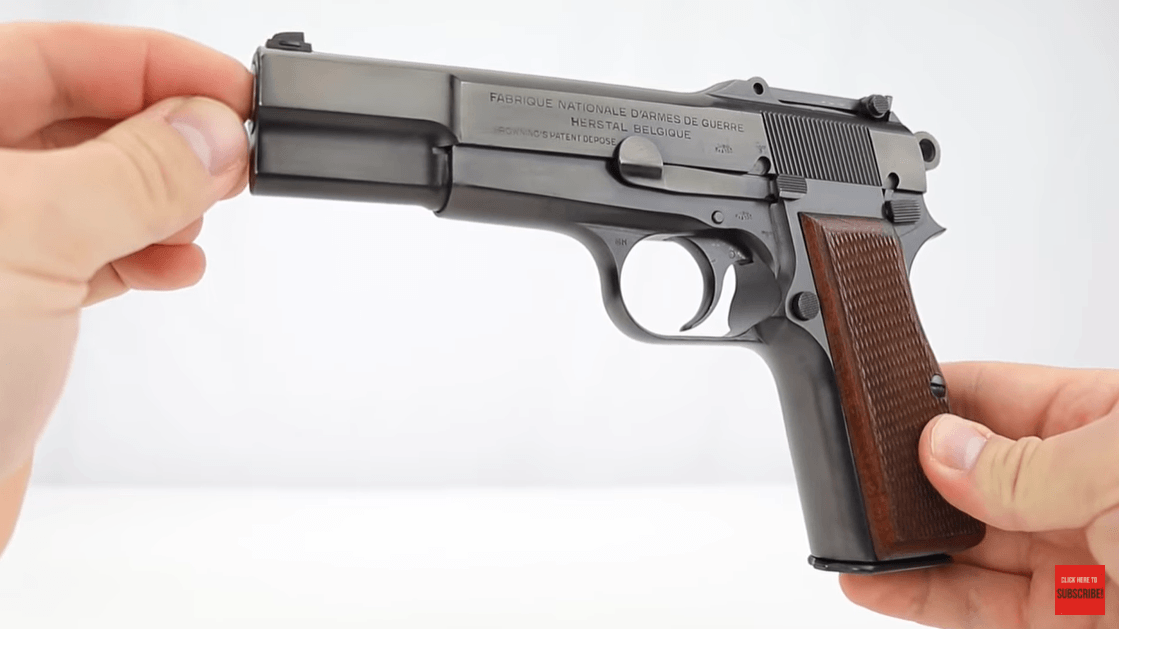
Now this is an example of the variation two. It's very simple to recognize and a lot more common. There's no slot for the log slot, they didn't use it anyway so the Germans did away with it but it does still have the tangent sight. This is approximate - about the first six months they had the tangent with a 613 proof but then the inspector proof changed to 103, and so for the second six months of 1941 you'll see the 103 proof. And this is a great example. If you look through this gun you can see the serial range, front strap is beautiful, I mentioned the 103 proof which you can see on the slide and the frame. It's also on the front, you can see it on the front of the gun and then one other spot on the spine of the magazine you can see the 103 proof as well. So these came as a rig in a holster with two magazines. So we're talking about two 13 round magazines. You could see why the Waffen-SS really preferred this weapon.
Transition between 2nd and 3rd Variation
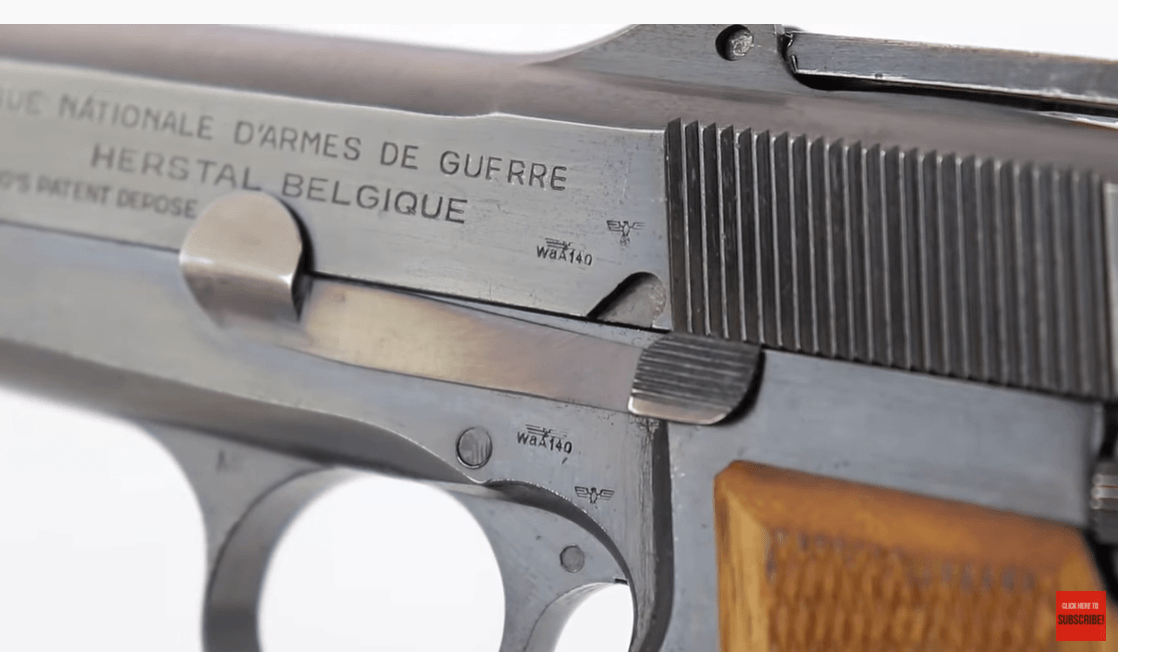
Okay before I jump to the third variation which started in 1942, somewhere in the transition at the end of '41 and going into '42, I have a 140 proof. This is a tangent sight, of course, no slot but what you see a tangent sight and a 140 proof which again began at the end of 1941 and into the beginning of 1942. Again a beautiful condition Browning Hi-Power, you can see the serial number is a bit later. You can see the tangent sight but this transitions then into the third variation where they did away with the tangent sight.
The Third Variation

I can only imagine that the German soldiers didn't really use this very much. It was for close combat; I mean you didn't pull this out to shoot soldiers across a field. This is a last-ditch where you're being charged and you just pull it out of your holster and open fire, so who the heck needs a tangent sight. So the third variation, the Germans cut cost and simplified production. Again the goal was to make these as fast as possible and get them out the door. We now have 140 proof, no slot, no more tangent, so it's considered fixed sight which by the way all the other German weapons such as the Luger and the P38 had fixed front and rear sights. So this takes us to 1943 and 1944, the remainder of those two years the guns had no tangent sight and this was the look. 140 proof, again it'll also be proofed on the front and you will see a 140 proof on the spine. Now I will make one comment about the proof on the spine is always so faint I can barely read it. If I'm at a gun show I can never see it until I get home and I actually get a magnifying glass and look. Sometimes I'm surprised because I get it home and it'll be 103 proofed, which is a nice bonus because they are a lot more rare. So this one has a 140 proof, barely visible and it does have wooden grips. Although at the very end in 1944 they went to a plastic grip, just like the Luger went to a plastic grip right at the end of production.
The more Common Browning Hi-Power
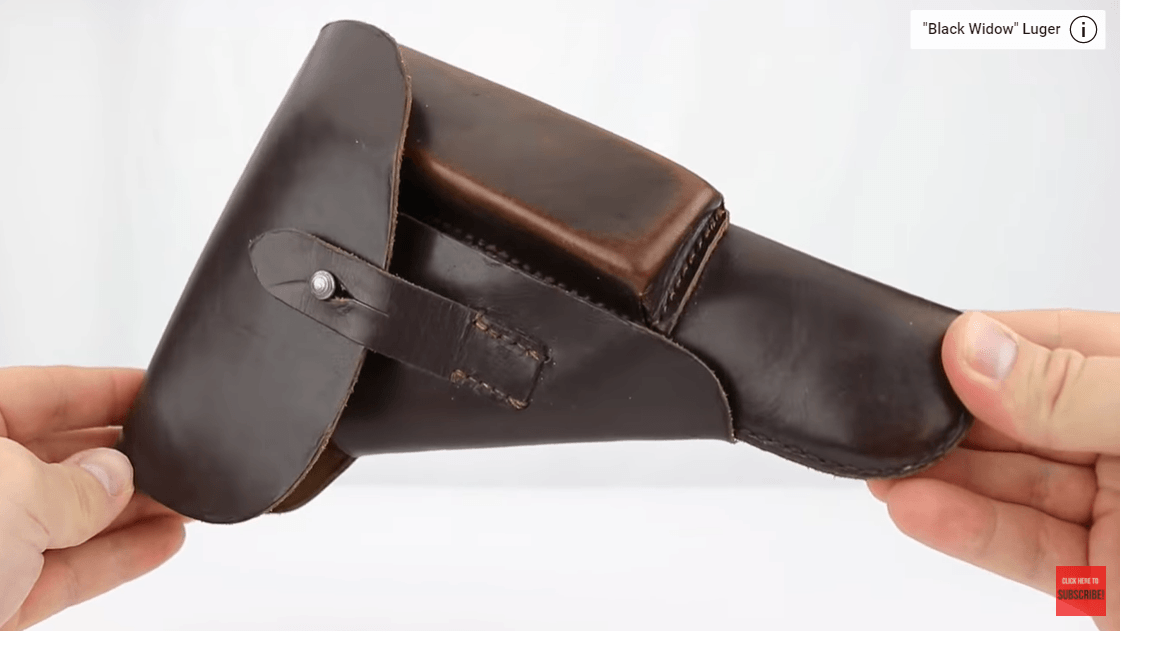
So this is the more common Browning Hi-Power that you will see available to collectors on our website, as well as other websites. This one actually is on our website right now, you can see it right here and it comes with this holster. The Hi-Power holster is very distinct. Usually, the date is right under here. This one is dated '44 but usually, you'll find the maker and the date right under this strap. But the reason it's so distinct it looks at first like a P38 holster but you can see the size of the magazine well is particularly large. So whenever I see one of these and I go oh a P38 holster and then I turn it sideways and I realize it's a Browning Hi-Power holster which sells for a little bit more than the P38 holster, a little more rare. This is in beautiful condition, has an extra magazine and it does look like this magazine has a 140 proof, although I can't really read the numbers but if you look very closely you can probably see it.
This Gun was just a Glitch

And we'll just wrap up our video with this final gun which isn't really a variation of its own, it's just kind of a glitch. You can see that it has the plastic grips that you would have at end of war. Also end of war there's only one proof mark. They weren't wasting their time putting lots of proof marks and it does have a suffix. This one has a B suffix which was the last of the ones made, so there's an A suffix and B suffix and then production ended because Germany was pushed out by the American army and the British army. They were pushed out of Belgium, so they left the factory. So this one was one of the last ones made.
This makes it so cool!
Now here's what makes it so cool. It looks like a standard late war production but take a look at that, how about that, slotted. And that is not fake. You would think this doesn't exist but if you get Van der Linden's book you will see at the end of the war, just like the Walther factory, if you go back and watch our video about the Walther factory, they will say that the end of the war they were using up discarded parts. And so a lot of those parts was from the pre-war period or early war production. In this case, this is a very late war gun, they were using up old parts and they happen to have a slotted, 140, no tangent, very cool gun. Glad this walked in.
Hope you enjoyed it Thank you!
I hope you enjoyed our video. Make sure you like and subscribe. Share this with some other people who might be interested and make sure you hit the notification bell so that you know when we put out another video.
